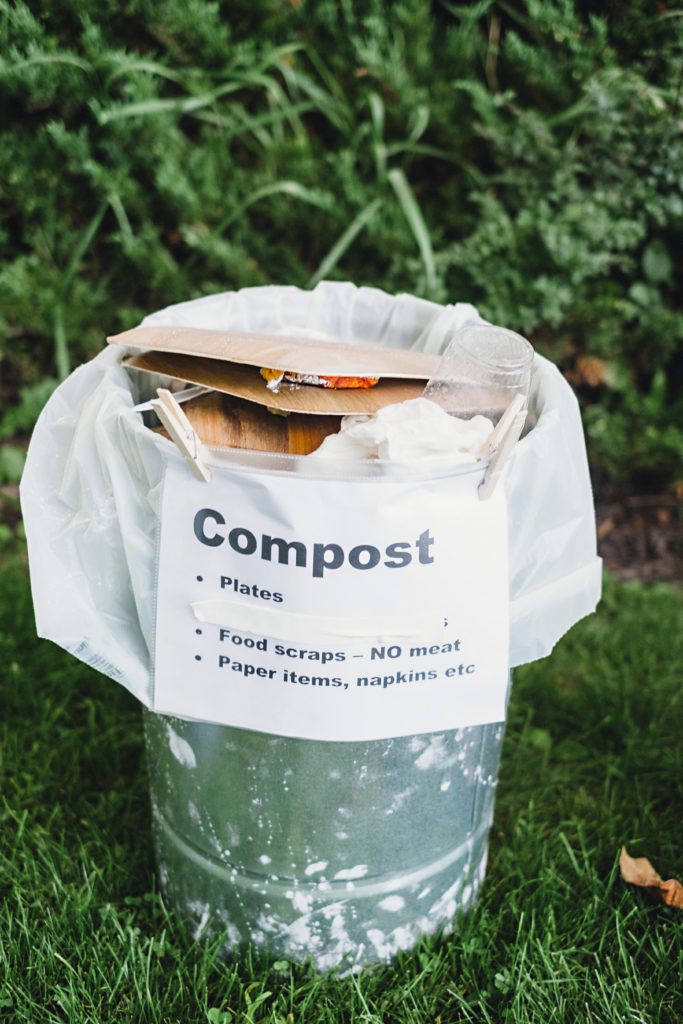A number of years ago, I wrote a post about compostable disposable dishes. At the time, it was the most accurate, up-to-date information I could find on the subject. But the world has evolved since then, and there is more to know now. So, here are some updates with what is new on the topic:
First, just what is a compostable disposable? Well, plastic (like, for plates, cups, flatware, etc.) can be made from petroleum. That kind is definitely not compostable and you have to throw it out. It is anything but eco-friendly.
But plastic can also be made from corn or sugar cane or various other plant-based sources. Dishes and so on made from that kind of plastic are marketed as being compostable. Compostable dishes can also be made from paper or from wood, such as bamboo. In theory, all of these dishes will break down into rich soil, given the right combination of heat, moisture, other nutrients, and microbial activity. Those dishes are more sustainable, as they don’t use petroleum as a base and they don’t have to end up in a landfill. In a perfect world, they end up on someone’s garden bed making the roses bloom.
So far, so good. But is it really that easy? Well, the first thing to know is that most of the compostable products that are available will not break down in your home compost pile. I have had good experiences with the kind of paper cups and bags that have a thin PLA (plant-based plastic) paper lining. It can still take a year or more for the plastic to degrade, but it does happen eventually. That is not the case with any of the heavier plastics, which require a very hot commercial composting facility.
The other thing to consider is the sourcing of the raw materials. It’s great that such a common (and local to the Midwest) crop such as corn can be used to make party dishes. I always wonder, though, if that is the best use of farmland. The jury is still out on this, but if using corn for plastic ends up driving up food prices, then perhaps it is an unsustainable practice in other ways than environmental. (In 2006, Smithsonian Magazine had a very good article that covered that issue, as well as many others implicated in the subject. For more updated information, try a web search on “biodegradable plastic problem” and you’ll turn up many more articles on the subject.)
What does all this mean for your eco-friendly celebration? One thing hasn’t changed: Probably the least wasteful, lowest impact kind of dishes are reusable ceramic dishes. If you don’t own them, you can rent them. (Or ask your planner for a list of facilities that include dishes in their rental cost!)
If you find that disposables are the best options, shop carefully. I find that restaurant supply stores have the best selection and prices. I like the Eco Products Store and Greenstaurant for most items. Read the descriptions thoroughly, though, and make sure the items are labeled as being compostable, as not everything on each site is. Also, don’t overlook the fact that standard-issue uncoated paper plates and paper napkins are all compostable.
Once used, you’ll want to make sure that all these compostable dishes (as well as food scraps) actually get composted and not thrown out. The easiest way to do that is to hire a composting service. My personal favorite is Collective Resource. They have drop-off service, as most composting companies do, but they will also send a staff member to your event to monitor the compost container and make sure everything is sorted properly. I recommend this highly if you want to be sure that only compostables get into the compost bucket, and that garbage or recycling goes elsewhere.
If you want to search out other composting services, a good (although incomplete) resource is Find A Composter, a national database of composting services.
Composting for your event has gotten a lot easier and more reliable in the last decade. We are definitely making progress in this area. I hope in another decade, we will see more big changes that improve the ways we can throw sustainable parties.


Recent Comments